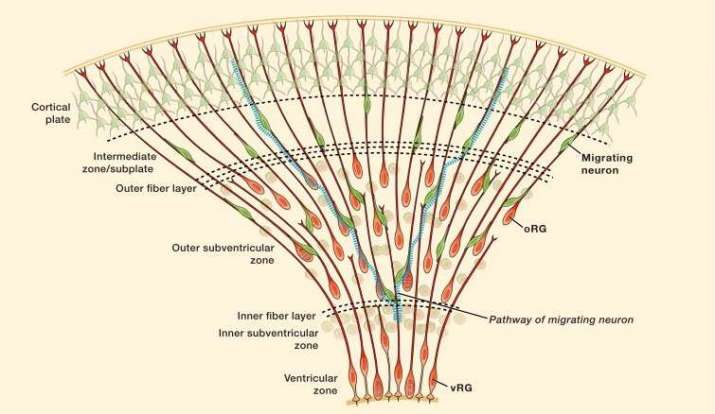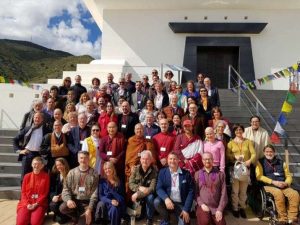
Several of the previous articles in this column introduced themes common to both neuroscience and Dharma, and provided a perspective that can help to understand and explain free will.
Free will is arguably the most important of all the intelligent faculties that characterize human beings and distinguishes them sharply from other animals as well as the quintessential mark of the evolution of human consciousness at its best.
It is only by exercising free will that human beings can depart from mechanistic conditioned and compulsory instinctive responses and shift their conscious behaviors towards value-based decisions.
By exerting one’s own volition, individual consciousness is asserted in the form of explicit choices. This is possibly both an outcome of and a driver for novel neural pathways shaping the brain in unique ways that eventually may contribute to the conscious imprint that can be referred to as karma.
Before becoming an object of study in neuroscience, free will has long been considered to be a fundamental human right, sanctioned by constitutions as in the case of the First Amendment in the Constitution of the United States. This is because—while not scientifically understood—humans have long known that there is an important role in developing and applying one’s intent to develop one’s view in a manner that is as free as possible from imposed views of others. This is what makes the human experience authentic, and it is a human right that is often suppressed by social artefacts and conditioning.
It can be said that human evolution has been driven by exercising free will. It is by free choices that our individual and collective destinies are shaped and as such they have a right to exercise it, sometimes at any cost.
Free will is also a necessary foundation of ethics, because it is only through free will that humans can make choices and decisions consistent with their values. It is only by free will that we choose to follow the noble path and deliberately leave ignorance and suffering behind.
Modern Science and philosophy have been strongly influenced by free will deniers, proponents of dominant scientific theories which consider free will to be an illusion. At the origin of these theories there are famous studies which were recently debunked—it took almost 60 years!
First Kornhuber and Deecke (1964) identified a measure called “Readiness potential” (bereitschaftspotential) as being an important measurable indicator of free will.* Some decades later, in the 1980s, Benjamin Libet conducted experiments demonstrating that decisions are actually made in the brain prior to subjects being consciously aware of them. He concluded—incorrectly it seems—that these results undermined the existence of free will. He suggested, further, that what we thought of as free will was actually the result of some kind of conditional reflex that showed up in the brain. This is a good example of how even one single flawed scientific conclusion can have, potentially long-term devastating consequences for social sciences and an impact on policy making.
Despite the known limitations of these early free will studies—it is not clear that research in the neuromotor responses of fingers or hand-movements can be adequate to explain a topic as complex as free will—much of the science that followed Libet consistently replicated his experiments and results. This is an example of bad science and researchers’ herd behavior, resulting in the marginalization and belittling of scientists still working on free will.
Thanks to novel technologies and more advanced methods, science has now started to re-evaluate Libets’ conclusions by revisiting them in a new context. A new generation of researchers—including Miller and Trevena, and later Shurger—reconsidered Libets’ experiments and reached different conclusions.**
Now Free will is enjoying a come-back on research agendas
Recent findings suggest that what Libet detected in his studies may have been metacognition—cognitive processes involved in monitoring, controlling and interpreting one’s own thinking, which can be identifiable from patterns of brain activation happening before decisions are made consciously—and not free will. Conscious decision-making is a very complex affair and our methods and techniques may not yet be adequate to understand and explain them.
Brain imaging may not yet allow us to observe free will—also because like many other system level phenomena is emergent, and cannot be easily described as a single neural event. However, it is possible to observe other related neural processes such as decision making and metacognition
In a recent talk at Neuromatch 2020, I suggested that free will in the brain shows system level activity that cannot be detected in any single region. It results from complex network dynamics involving metacognition and decision making.
In Dharma, we consider enlightened beings such as Shakyamuni as a good example of a human having achieved the highest level of conscious development possible. This can be attributed to his exertion of ultimate free will–the free will to renounce at all cost one’s own individual ego-centered existence and conditioned choices, the free will to pursue one’s view and ethics
This high level of consciousness achieved by Buddhas can manifest as an ushnisha, the iconographic bump on the Buddha’s head. Although generally considered a metaphor for a projection of vibrational energy barely perceivable above the physical head of a Buddha, in visual representations such as images and statues it is shown as the protuberance at the top of the Buddha’s head that characterizes him uniquely.
Neuroscience today demonstrates that both free will and meditative concentration manifest in cortical activity and can result in a thickened cortex.
Free will is classically attributed to activity in the prefrontal cortex. Such findings generated the concept that free will is not a function restricted to the prefrontal cortex but is more widely embedded in the brain, indeed including the parietal cortex.*** Brain regions associated with attention, interoception, and sensory processing were thicker in meditation participants than matched controls, including the prefrontal cortex and right anterior insula.****
Could the ushnisha, the bump on the top of the Buddha’s head, represent—metaphorically or otherwise—an exceptional cortex resulting from neural activity leading to the highest level of conscious evolution? Could the development of the neocortex, the most advanced anatomical development of the brain evolutionarily, be the result of the exertion of free will?

And in the case of enlightened consciousness, can the determination to liberate oneself and others from the limitations and suffering caused by conditional existence be inherently tied to free will? Could the ushnisha, physically or symbolically, be considered an indicator or a marker of single-pointed intention of enlightened individuals to empty the lower realms—a kind of neural correlate of enlightenment?
* Experiments Into Readiness for Action: 50th Anniversary of the Bereitschaftspotential (World Neurology)
** Brain might not stand in the way of free will (New Scientist)
*** Neurology of widely embedded free will (ScienceDirect)
**** Lazar, et al. 2005. “Meditation experience is associated with increased cortical thickness.” Neuroreport. 16(17), 1893-1897.
References
Baird, Benjamin, et al. 2013. “Medial and lateral networks in anterior prefrontal cortex support metacognitive ability for memory and perception.” Journal of Neuroscience 33.42, 16657-16665.
Bogen, Joseph E. 1995. “On the neurophysiology of consciousness: 1. An overview.” Consciousness and Cognition 4.1, 52-62.
Fleming, Stephen M., and Raymond J. Dolan. 2012. “The neural basis of metacognitive ability.” Philosophical Transactions of the Royal Society B: Biological Sciences 367.1594, 1338-1349.
Frith, Chris D., and Patrick Haggard. 2018. “Volition and the brain–revisiting a classic experimental study.” Trends in neurosciences 41.7, 405-407.
Hulbig, Philip. 2020. “Toward a Neurological Understanding of Metacognition.” Educational Studies Dissertations. 154. https://digitalcommons.lesley.edu/education_dissertations/154.
Lavazza, Andrea. 2016. “Free will and neuroscience: from explaining freedom away to new ways of operationalizing and measuring it.” Frontiers in Human Neuroscience 10, 262.
Libet, Benjamin, Elwood W. Wright Jr, and Curtis A. Gleason. 1983. “Preparation-or intention-to-act, in relation to pre-event potentials recorded at the vertex.” Electroencephalography and clinical Neurophysiology 56.4, 367-372.
Qiu, Lirong, et al. 2018. “The neural system of metacognition accompanying decision-making in the prefrontal cortex.” PLoS biology 16.4, e2004037.
Schurger, Aaron, Jacobo D. Sitt, and Stanislas Dehaene. 2012. “An accumulator model for spontaneous neural activity prior to self-initiated movement.” Proceedings of the National Academy of Sciences 109.42, E2904-E2913.
Trevena, Judy Arnel, and Jeff Miller. 2002. “Cortical movement preparation before and after a conscious decision to move.” Consciousness and cognition 11.2, 162-190.
See more
Neuromatch Conference
A Famous Argument Against Free Will Has Been Debunked (The Atlantic)












